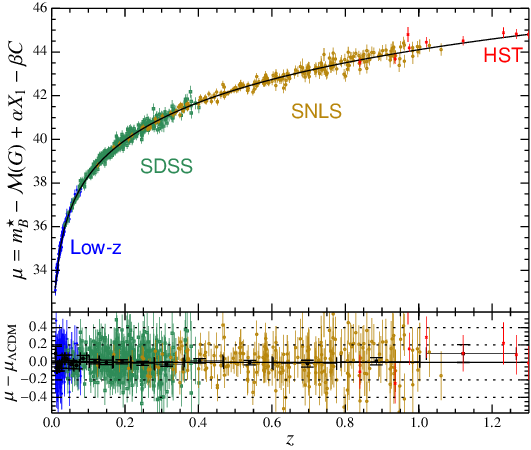SNLS aimed at detecting type Ia supernovae at high redshift for cosmological studies. It belongs to the second generation of experiments in that field, launched after the unexpected discovery of the late acceleration of the Universe expansion rate by the first programs of type Ia supernovae at the end of the1990s.
SNLS used the Canada-France-Hawaii telescope (CFHT) of 3.6 m located on the Mauna Kea mountain in Hawaii. It was equipped with MegaCam, the large field CCD camera designed and built at Irfu. In a five-year program, from 2003 to 2008, SNLS met its goal and was able to detect and measure precisely several hundreds of type Ia supernovae with redshifts from 0.2 to 1.0, to be compared to around 50 events for the previous experiments. This large sample allowed the question of the late acceleration of the Universe expansion rate to be refined with a better precision and a sophisticated methodology, which SNLS did in a series of publications that had a considerable impact in the international cosmology community.
SNLS was and remains the most performing program for the detection of type Ia supernovae at high redshift.

Contact: Vanina RUHLMANN-KLEIDER




